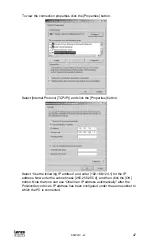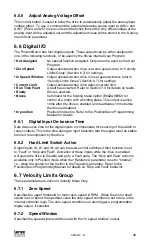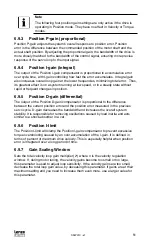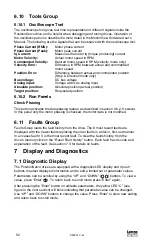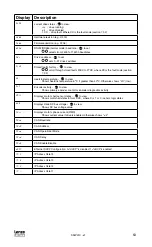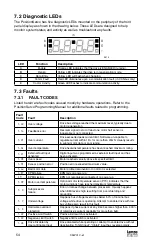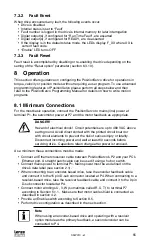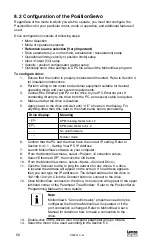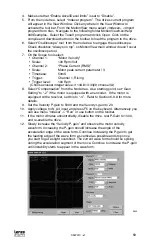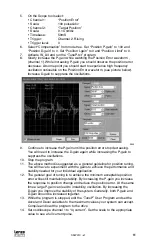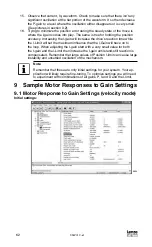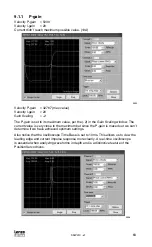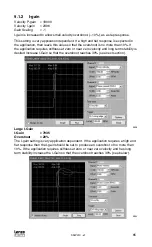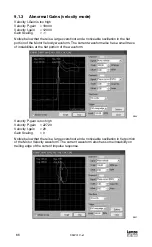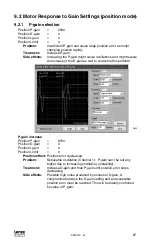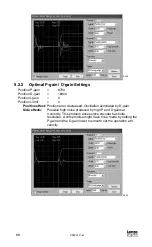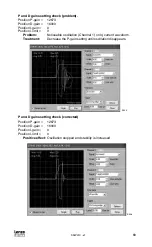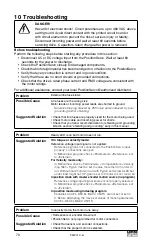
S94P01C -e1
61
5. On the Scope tool select:
• Channel 1:
“Position Error”
• Scale:
100 pulses/div
• Channel 2:
“Target Position”
• Scale:
0.1 Unit/div
• Timebase:
50mS
• Trigger:
Channel 2, Rising
• Trigger level:
0
6. Select “Compensation” from node tree. Set “Position P-gain” to 100 and
“Position D-gain” to 0. Set “Position I-gain” to 0 and “Position I-limit” to 0.
7. Activate IN_A3 and run the “TuneP.txt” program.
8. Slowly increase the P-gain while watching the Position Error waveform ,
(channel 1). While increasing P-gain you should observe the position error
decrease. At some point you should start to experience high frequency
oscillation noticeable on the Position Error waveform, (see picture below).
Increase D-gain to suppress the oscillations.
S933
9. Continue to increase the P-gain until the position error stop decreasing.
You will need to increase the D-gain again while increasing the P-gain to
suppress the oscillations.
10. Stop the program.
11. The above method is suggested as a general guideline for position tuning.
You will have to experiment with the gains to achieve the performance and
stability needed for your individual application.
12. The general goal of tuning is to achieve the minimum acceptable position
error while still maintaining stability. By increasing the P-gain you increase
the response to position change and reduce the position error. At the same
time a large P-gain can lead to instability, oscillation. By increasing the
D-gain you improve the stability of the system. Generally, both P-gain and
D-gain should be increased together.
13. While the program is stopped, edit the “TuneP” User Program and set the
Accel and Decel variables to the maximum values your system can accept.
Compile and load the program to the drive.
14. Set oscilloscope channel 1 to “Iq current”. Set the scale to the appropriate
value to see a full current pulse.

